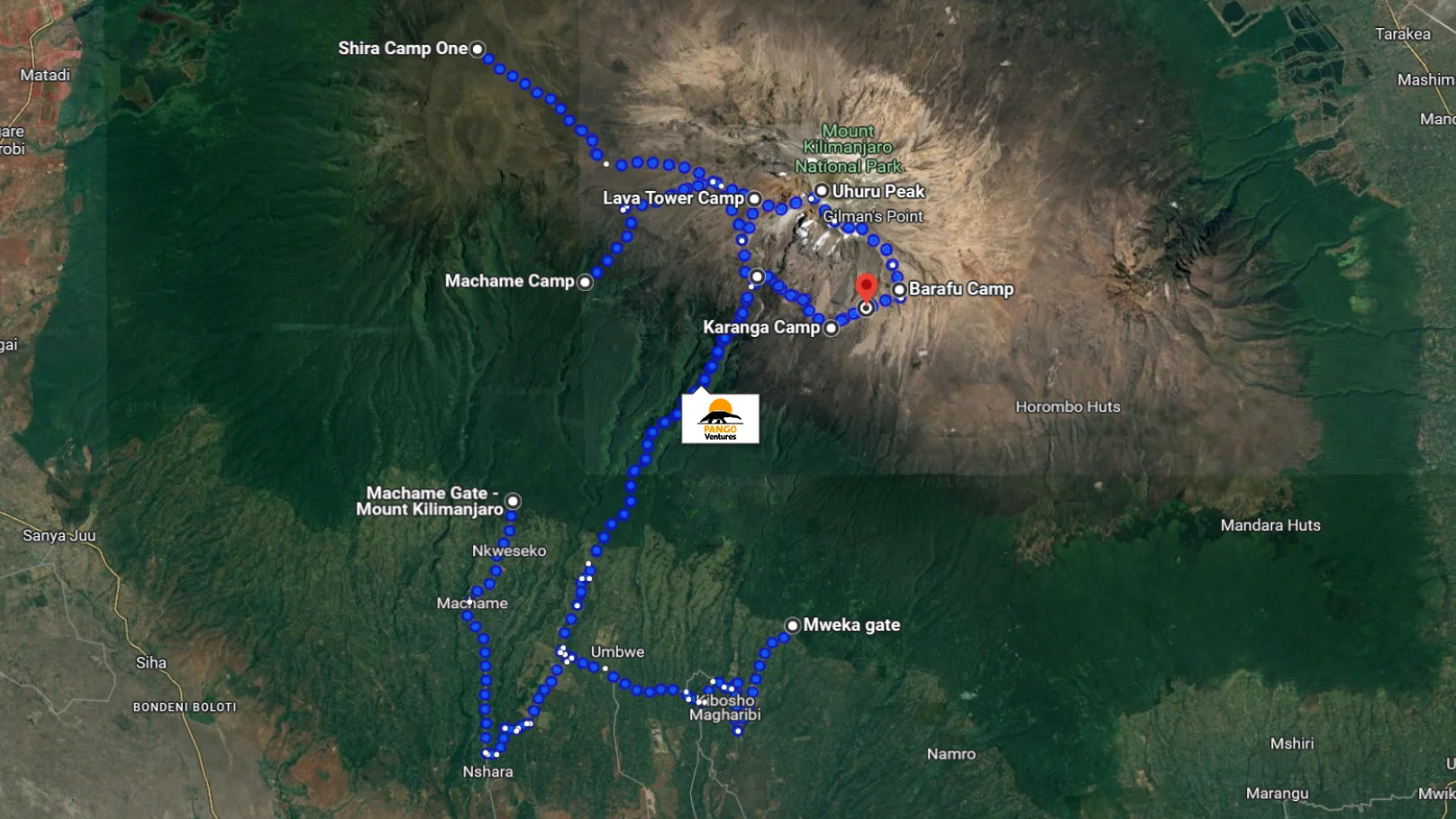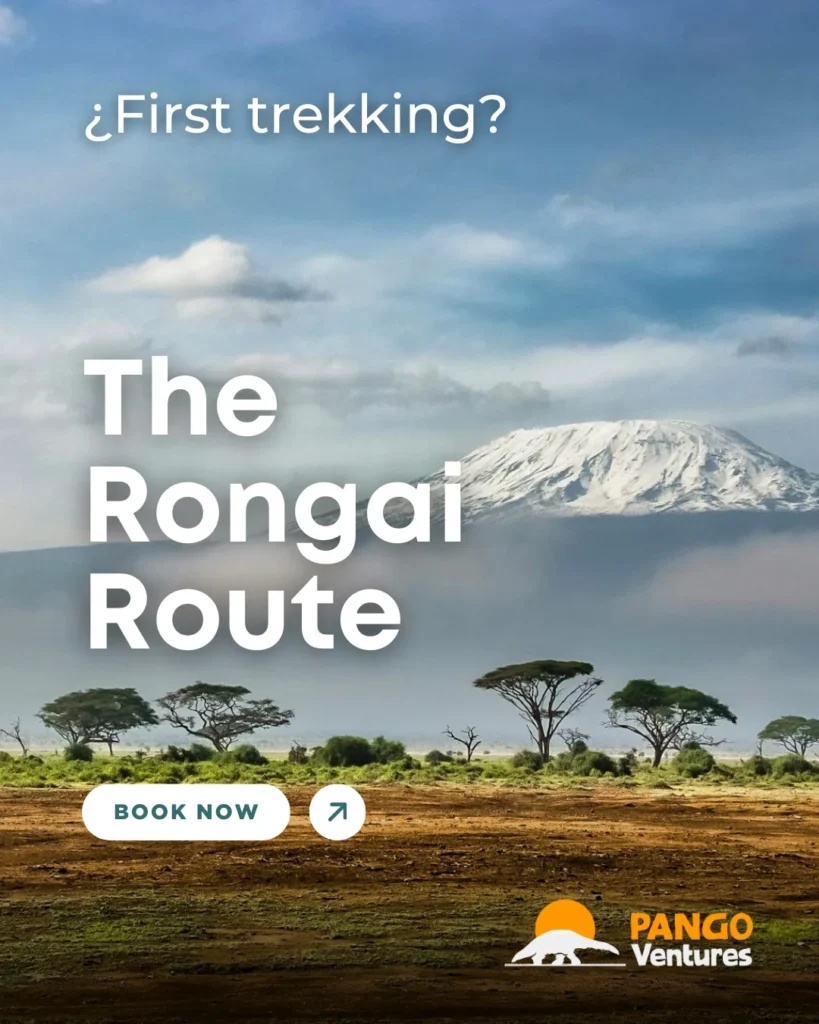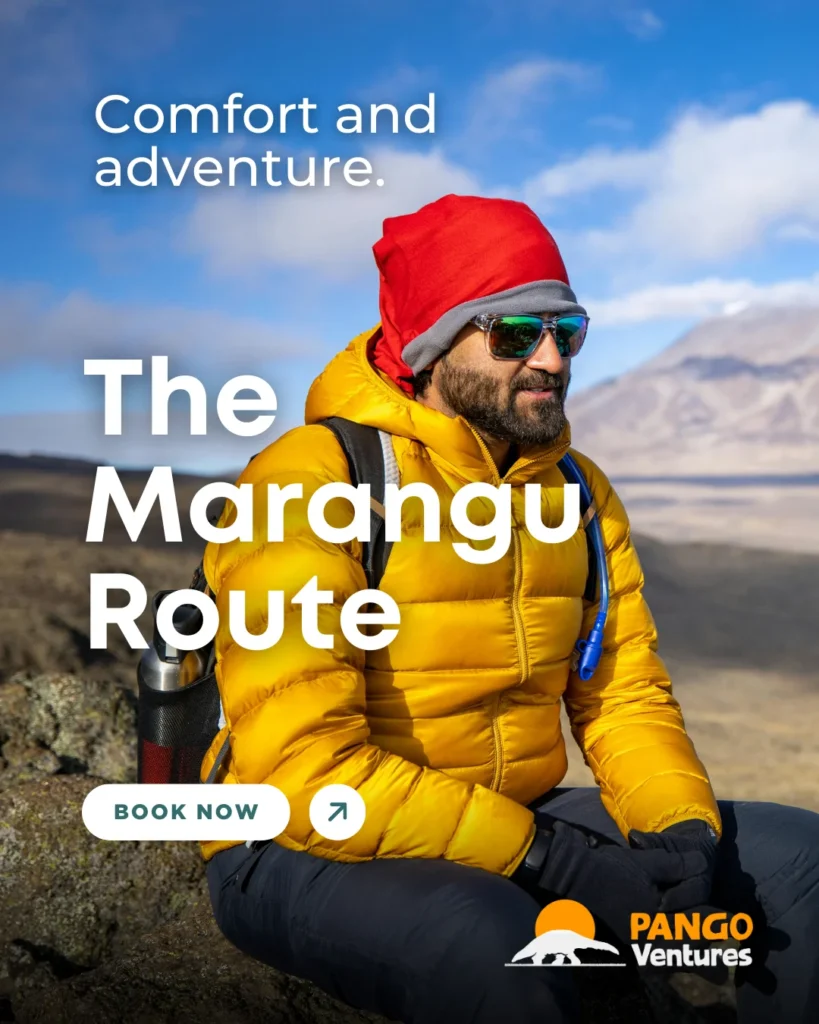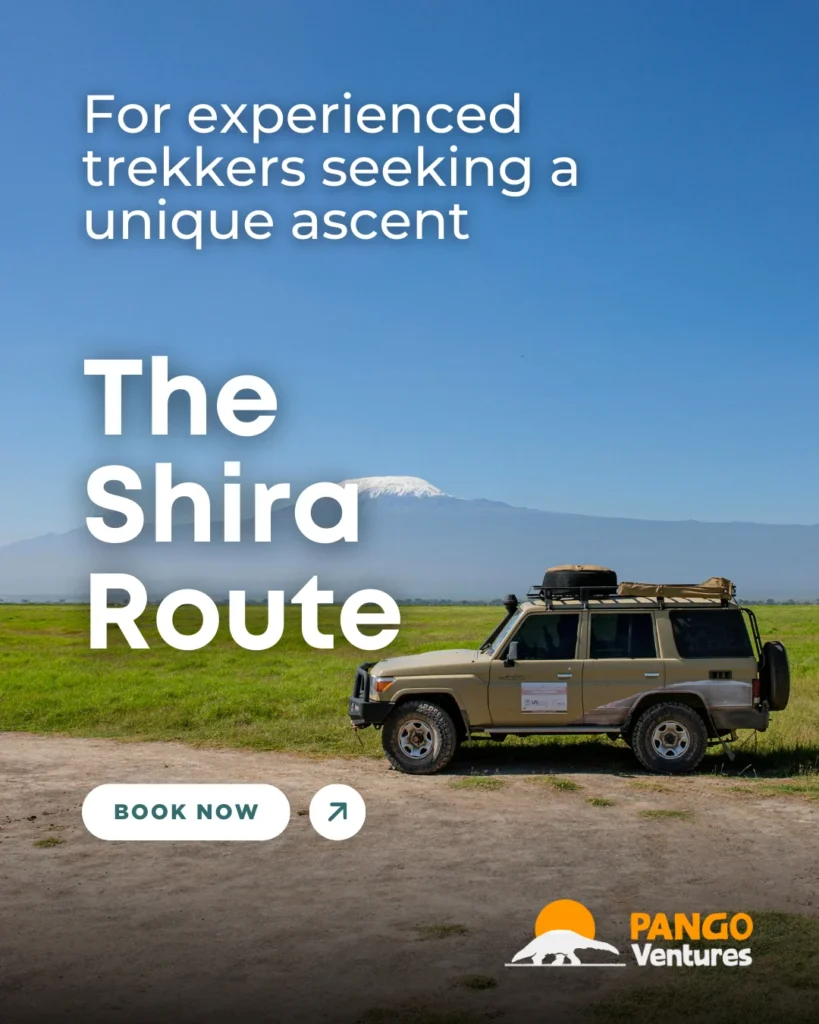The Machame Route on Kilimanjaro (7 days)
Where you'll be

Experience an unforgettable adventure with the 7-day Machame Route, one of the most scenic and rewarding treks up Mount Kilimanjaro! This route offers an exhilarating mix of landscapes, from lush rainforests to panoramic views of the Shira Plateau and the dramatic ascent up the Barranco Wall. Each day brings new challenges, breathtaking views, and opportunities for acclimatization, making it the perfect journey for those seeking both adventure and success in reaching the summit.
The extra day on the Machame Route allows for better acclimatization, increasing your chances of reaching Uhuru Peak, the highest point in Africa, at 5,895 meters. On the night of your summit attempt, you’ll ascend under a star-filled sky, reaching the peak just in time for an awe-inspiring sunrise over the continent.
Whether it’s the steep climb of the Barranco Wall, the thrill of standing atop Africa, or the camaraderie built with fellow trekkers, this journey will leave you with memories to last a lifetime. Ready for the challenge? The 7-day Machame Route awaits!
7 days | ~6 km (~4 miles) | Once-in-a-lifetime experience
Cancellation flexibility
What you'll do
Day 1: Machame Gate to Machame Camp
- Elevation: 1,800m (5,900ft) to 3,000m (9,840ft)
- Distance: ~11 km (~7 miles)
- Hiking Time: 5-7 hours
- Your trek begins at Machame Gate, leading through lush rainforest. The path can be muddy and challenging at times, but the scenery is beautiful. The first night is spent at Machame Camp, located above the forest line.
Day 2: Machame Camp to Shira Camp
- Elevation: 3,000m (9,840ft) to 3,840m (12,600ft)
- Distance: ~5 km (~3 miles)
- Hiking Time: 4-6 hours
- You’ll ascend steeply, leaving the rainforest behind and entering the moorland zone. The trail opens up, offering stunning views of the Shira Plateau and Kibo Peak. You’ll spend the night at Shira Camp with great panoramic views.
Day 3: Shira Camp to Lava Tower to Barranco Camp
- Elevation: 3,840m (12,600ft) to 4,630m (15,190ft) to 3,950m (13,000ft)
- Distance: ~10 km (~6.2 miles)
- Hiking Time: 6-8 hours
- This day involves a long ascent to Lava Tower for acclimatization before descending to Barranco Camp. This is a critical day for altitude adjustment as you “climb high and sleep low.” You’ll end the day at Barranco Camp, beneath the imposing Barranco Wall.
Day 4: Barranco Camp to Karanga Camp
- Elevation: 3,950m (13,000ft) to 4,035m (13,250ft)
- Distance: ~5 km (~3.1 miles)
- Hiking Time: 4-5 hours
- The day starts with a climb up the Barranco Wall, a steep but non-technical ascent. After the wall, the trail becomes gentler as you traverse ridges and valleys, eventually reaching Karanga Camp for the night. This day gives you a little more time to acclimatize before higher ascents.
Day 5: Karanga Camp to Barafu Camp
- Elevation: 4,035m (13,250ft) to 4,640m (15,090ft)
- Distance: ~4 km (~2.5 miles)
- Hiking Time: 3-4 hours
- You’ll make a gradual ascent to Barafu Camp, which will be your base camp for the summit attempt. The trail is short but steep, and you’ll reach Barafu in time to rest and prepare for the summit push. You’ll go to bed early to rest for the midnight start.
Day 6: Barafu Camp to Summit (Uhuru Peak) and down to Mweka Camp
- Elevation: 4,640m (15,090ft) to 5,895m (19,341ft) to 3,100m (10,170ft)
- Distance: ~17 km (~10.5 miles)
- Hiking Time: 11-14 hours
- Your summit day starts around midnight. The path is steep and rocky as you ascend to Stella Point (5,739m), and then a final push to Uhuru Peak, the highest point in Africa. After the summit, you’ll descend back to Barafu Camp for a short rest, then continue down to Mweka Camp for the night.
Day 7: Mweka Camp to Mweka Gate
- Elevation: 3,100m (10,170ft) to 1,640m (5,380ft)
- Distance: ~10 km (~6.2 miles)
- Hiking Time: 3-4 hours
- On the final day, you’ll descend through the rainforest to Mweka Gate. At the gate, you’ll sign out and collect your summit certificate. You’ll then be driven back to your hotel for a well-deserved rest and celebration.
The extra day on the 7-day Machame Route provides more time for acclimatization, improving your chances of a successful and enjoyable summit
All of our guides are experts and locals
Things to know
Difficulty: The Machame Route is challenging but manageable with the extra acclimatization day, making it one of the more popular routes for success. Be prepared for long days of hiking and steep ascents, especially on summit night.
Acclimatization: This route follows the “climb high, sleep low” strategy, helping your body adjust to the altitude and improving your chances of reaching Uhuru Peak.
Altitude Sickness: Though the extra day helps with acclimatization, altitude sickness is still a risk. Stay hydrated, pace yourself, and listen to your guides for safety tips.
Scenery: The route is known for its incredible views, taking you through lush rainforests, expansive moorlands, and rocky landscapes, offering diverse scenery each day.
Summit Night: The summit attempt begins around midnight. The hike to Uhuru Peak is tough and cold but incredibly rewarding, with the goal of reaching the summit at sunrise.
Weather: Kilimanjaro’s weather is unpredictable. Be prepared for hot days, cold nights, rain, and wind, especially at higher altitudes. Layers and proper gear are essential.
Physical Fitness: You don’t need to be an expert climber, but good physical fitness is important. Cardio training, stamina, and leg strength are all beneficial for completing the trek.
Guides and Porters: You’ll be accompanied by a professional team of guides and porters, who will carry most of your gear, set up camp, and ensure your safety throughout the hike.
Packing: Bring essential items like warm clothing, trekking poles, a good pair of boots, a sleeping bag for cold temperatures, and sun protection. Most of your heavy gear will be carried by porters.
Permits and Costs: The cost of the trek includes park fees, guide and porter services, and meals. It’s essential to book through a reputable operator who ensures fair wages for the crew and quality services.



